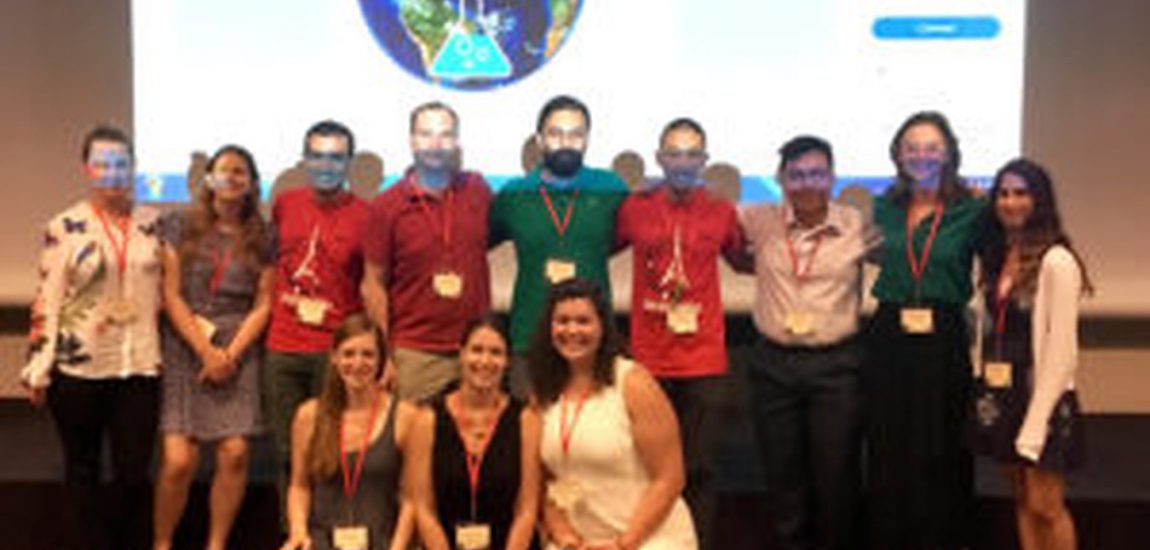
Love Triangles and Spies – Geochemistry in 3 minutes
Goldschmidt 2017 sees the introduction of the pop-up talks; an exciting new initiative organised by three early-career scientists (Steffi Lutz, Kimberley Bitterwolf, and Alex Holland). Eleven students gave a series of 3-minute TED-style talks covering topics ranging from the origins of life to mine waste particles. Their mission was to convey a well-formulated idea in an engaging way. It seems an appropriate year to introduce a new science communication component to Goldschmidt given the recent drive amongst the scientific community to improve relations with the general public. The importance of engaging the public was emphasised by Rehemat Bhatia during her talk- Adventures of a Soapbox Scientist and Artist. Rehemat used 3D models of foraminifera to show how collaboration between scientists and artists can help make the invisible visible (and accessible).
Some deep questions were asked during the pop-up talks; with Indrani Mukherjee opening her talk by asking why are we here and how did we come to be. For Indrani, the quest to fully understand the ‘Boring Billion’ is about more than just oxygen. Her PhD focuses instead on the important role played by trace elements, finding that a period of low trace element availability at the start of the Boring Billion triggered stress for lifeforms.
Carol Mahoney kept the audience laughing with a love triangle. She opened by explaining why studying anoxia during the Cretaceous is important for our understanding of what might happen to our climate as a result of anthropogenic actions. Acknowledging that we’re in the city of love, Carol told her tale as the love triangle between Katy Perry (Fe), Russell Brand (O), and Orlando Bloom (S). We were taken on a journey from the good times in the relationship between Katy and Russell (when she gave him her spare electron and they reacted all over the place), to the time when a change in the political climate put Russell in high demand and threw Katy into the arms of Orlando who was happy to share an electron with her and form pyrite. What does this mean? When you see pyrite beds it means that oxygen demand exceeded supply.
We heard from Konstantinos Thomaidis that the FBIP (Federal Bureau of Igneous Petrology) believes boron to be a subduction spy, as he gave a call to arms for more people to join the boron geochemistry team. The pop-up talks themselves could be seen as a call to arms for geochemists to showcase their research to a wider audience. We certainly saw an entertaining side to geochemistry at this great new addition to Goldschmidt.
